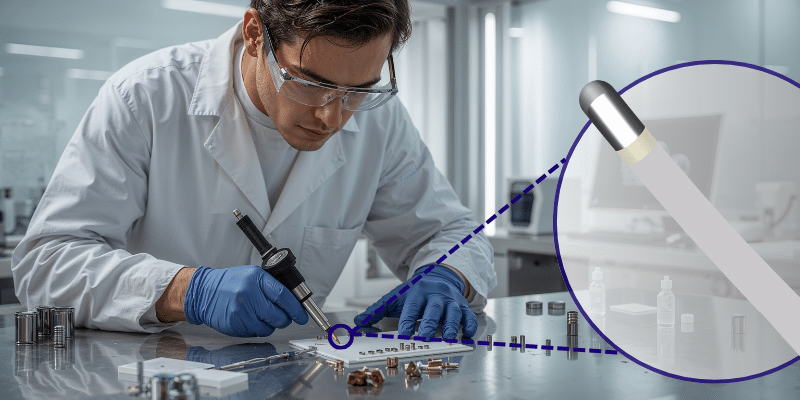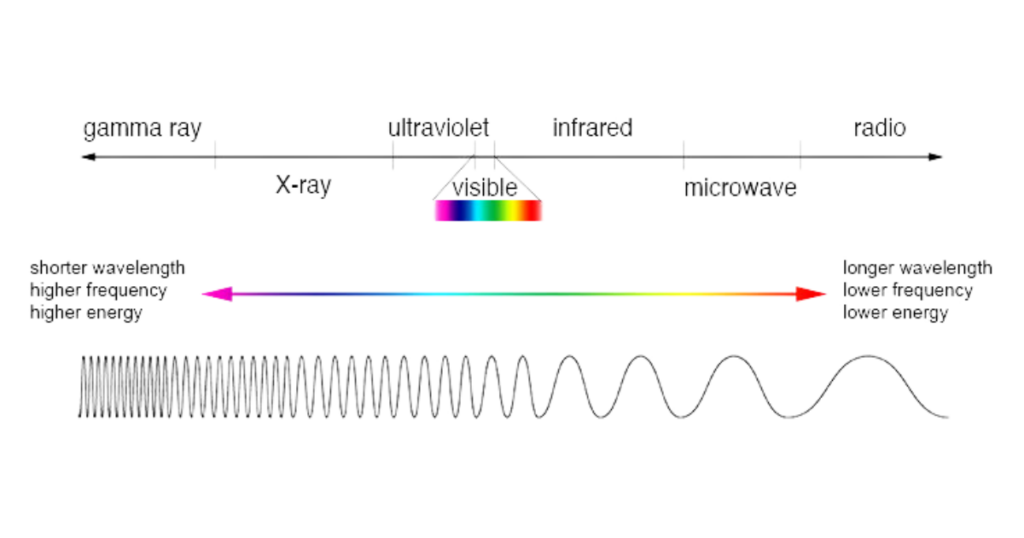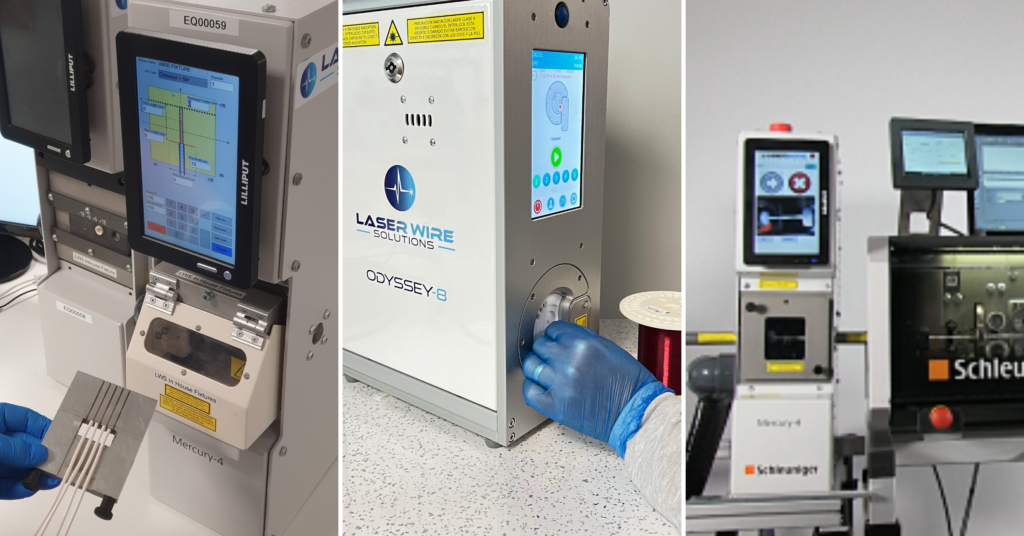Medical catheters are life-saving devices used in procedures ranging from cardiovascular interventions to neurological treatments. The integrity of these devices depends heavily on the precision of their components, particularly at the points where wires, electrodes, and connectors are joined. One of the most important connections is the ring weld, which ensures strength, reliability, and conductivity. And here’s the key: a strong ring weld on a catheter starts with laser wire stripping.
In this article, we’ll explore how laser wire stripping sets the foundation for durable welds, why it outperforms traditional stripping methods, and how manufacturers can optimize their processes to improve patient safety and device performance.
Why Ring Welds Are Critical in Medical Catheters
Role of Welding in Catheter Reliability
The ring weld is not just a structural joint, it’s the lifeline of the catheter. It secures electrodes, guides, and connectors, ensuring that electrical signals or fluids can travel without interruption. A poorly executed weld could result in weak joints, electrical resistance, or even device failure.
Common Challenges in Achieving Strong Welds
-
Inconsistent surface preparation
-
Residue from insulation materials
-
Heat damage from manual stripping
-
Misalignment during the welding process
This is where laser wire stripping changes the game.
Fundamentals of Laser Wire Stripping
What Is Laser Wire Stripping?
Laser wire stripping uses precisely controlled laser beams to remove insulation from wires without damaging the conductive core. Unlike mechanical methods, it achieves high precision, consistency, and cleanliness, critical for medical applications.
Comparison: Laser Wire Stripping vs. Mechanical Stripping
| Feature | Mechanical Stripping | Laser Wire Stripping |
|---|---|---|
| Accuracy | Variable | Extremely Precise |
| Risk of Damage | High (nicks, cuts) | Very Low |
| Cleanliness | Residues left behind | Clean, residue-free |
| Speed | Slower | Faster, scalable |
Benefits of Laser Stripping for Medical Devices
-
Non-contact and damage-free
-
Consistent preparation for welding
-
Compatibility with ultrafine wires
-
Reduced contamination and oxidation risks
The Science Behind a Strong Ring Weld
Material Considerations for Catheter Wires
Catheters often use biocompatible materials like platinum-iridium, stainless steel, or Nitinol. Each requires precise energy input during welding.
Heat Control and Precision Welding
Too much heat can damage wires, while too little compromises weld strength. Laser systems allow fine-tuned control.
Impact of Surface Cleanliness on Weld Strength
Even microscopic residues from insulation can weaken welds. Laser stripping eliminates this issue by preparing an ultra-clean surface.
How Laser Wire Stripping Enhances Ring Weld Quality
Removal of Insulation Without Damaging Conductors
The laser vaporizes insulation layers without mechanical stress.
Consistent Surface Preparation for Welding
Uniform stripping ensures even energy distribution during the welding process.
Reduced Risk of Contamination in Weld Zones
No dust, oils, or mechanical residues are left behind, which is essential for medical-grade devices.
Step-by-Step Process: From Wire Stripping to Ring Welding
Stage 1: Laser Wire Stripping
The first stage is removing the insulation. Unlike manual or mechanical methods, lasers deliver precision without physical contact. This means no cutting into the conductor and no risk of leaving sharp edges that could compromise weld integrity.
Stage 2: Alignment and Preparation
After stripping, the wire must be positioned with pinpoint accuracy. Even slight misalignments can cause weak joints. Automated systems often use vision guidance to ensure perfect alignment before welding.
Stage 3: Laser Welding of the Ring
The actual welding process involves directing a focused laser beam around the wire to create a seamless ring weld. This weld is strong, corrosion-resistant, and conductive, ideal for medical environments.
Stage 4: Quality Inspection and Testing
Finally, advanced testing methods like micro-CT scanning, pull tests, and electrical resistance checks verify weld strength. These steps ensure compliance with medical standards.
Advanced Techniques in Laser-Assisted Catheter Manufacturing
Automation in Wire Stripping and Welding
Automation reduces variability in production. Robotic systems can perform stripping, welding, and inspection in one continuous workflow, increasing throughput and reducing errors.
AI and Machine Vision in Weld Quality Control
Machine learning algorithms analyze weld quality in real time. Cameras detect imperfections invisible to the human eye, ensuring only defect-free catheters move forward in production.
Standards and Regulations in Medical Welding
ISO and FDA Guidelines for Catheter Welding
Manufacturers must comply with strict standards, including ISO 13485 and FDA 21 CFR Part 820. These guidelines emphasize traceability, documentation, and validated processes for all welding activities.
Importance of Compliance in Medical Device Manufacturing
Regulatory compliance is not just about passing audits, it ensures patient safety. A defective weld could mean the difference between a successful procedure and a medical complication.
Case Studies: Successful Catheter Ring Welds with Laser Wire Stripping
Example from Cardiovascular Catheters
In a recent study, cardiovascular catheters manufactured with laser wire stripping showed a 35% increase in weld strength compared to those prepared with mechanical stripping.
Example from Neurological Catheters
Neurological catheters, which often use ultrafine wires, benefited from laser stripping’s precision. Weld failures decreased by nearly 40%, improving reliability in delicate brain procedures.
Common Mistakes in Catheter Ring Welding
Inadequate Stripping Leading to Weak Welds
If insulation is only partially removed, welds may not fuse correctly, leading to electrical resistance.
Overheating and Material Damage
Excessive laser energy can melt or deform wires. Controlled parameters prevent this issue.
Poor Alignment During Welding
Even the strongest welds can fail if components aren’t aligned. Proper fixturing is crucial.
Benefits of Strong Ring Welds in Patient Safety
Longevity and Durability of Catheters
Strong welds prevent early device failure, allowing catheters to withstand repeated use and extended procedures.
Prevention of Device Failure in Critical Applications
In life-saving procedures, a weak weld could result in signal loss or catheter breakage. Reliable welds directly translate to better patient outcomes.
Future Trends in Catheter Welding Technology
Ultrafast Lasers and Precision Stripping
Next-generation femtosecond lasers provide even cleaner, faster stripping with minimal thermal effects.
Nanotechnology in Medical Welding
Nanocoatings may soon improve weld bonding at the molecular level, further increasing strength and biocompatibility.
FAQs on Laser Wire Stripping and Ring Welds
Q1: Why is laser wire stripping better than mechanical stripping for catheters?
Laser stripping is cleaner, more precise, and less damaging, ensuring stronger welds and greater reliability.
Q2: Can laser stripping be used on all catheter materials?
Yes, it works on metals like platinum-iridium, stainless steel, and Nitinol, as well as polymer-insulated wires.
Q3: How does laser wire stripping improve patient safety?
By ensuring consistent welds, it reduces the risk of catheter malfunction during critical procedures.
Q4: Is laser welding cost-effective for medical manufacturers?
While initial setup is costly, the long-term benefits of reduced defects, faster throughput, and regulatory compliance make it highly cost-effective.
Q5: What quality checks are performed on catheter ring welds?
Tests include pull strength, electrical continuity, visual inspection, and advanced imaging techniques.
Q6: What’s the future of catheter welding technology?
Expect more automation, AI-driven inspection, ultrafast lasers, and nanomaterial enhancements in the coming years.
Conclusion: Why a Strong Ring Weld on a Catheter Starts with Laser Wire Stripping
Catheter reliability hinges on the integrity of its welds. The foundation of a strong, durable ring weld begins with laser wire stripping, which ensures clean, damage-free, and consistent surfaces. As medical devices evolve, laser-assisted manufacturing and welding will play an even greater role in improving patient safety and advancing healthcare technology.
In short: If you want the strongest, safest, and most reliable catheters, it all starts with laser wire stripping.
Further Reading:
Medical Device Manufacturing
Case Study: How a Leading Medical OEM Made Laser Wire Stripping the Norm for Ring Welds









